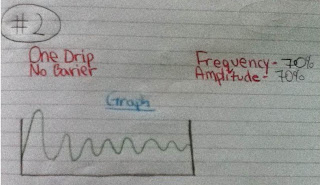Francesca
7a
02/06/2012
Science
Mrs. Medenica
Earthquakes
One
of the most impressive natural phenomenons is the earthquake. To give a
definition of earthquakes I can generally say that earthquakes are the
movements in the Earth’s crust. More precisely they are the effect of the release
of energy that causes shaking and trembling over the Earth’s surface. Actually
they are potent vibrations that go through the Earth’s underground and upwards.
The point underground where the earthquake begins is called focus, meanwhile
the center of the earthquakes on the crust is called epicenter.
It
is important to know what tectonic plates are; they are huge pieces of land
that form our planet. Earthquakes occur when two tectonic plates meet, then they
cause pressure that leads to a long crack; these cracks are called fault lines;
for example one of the most famous is the San Andreas Fault Line in California,
USA. Usually the energy waves’ strength makes the rocks near the fault line
either shake sideways or up and down, causing earthquake shock waves.
There
are thousands of Earthquakes per year, but not all are felt by people or
recorded by scientists. Though there are frequent places where they occur, they
are: around the Pacific Ocean, others happen in the Mediterranean-Asian belt,
some nearby the Himalayan range.
Of
course we have some big effects from earthquakes. Some of them are tsunamis, avalanches
and fires. Tsunamis are large and fast water waves that cause many damage and
kill many people. Avalanches are made of mud and rocks or snow. Fires usually originate
from broken electrical cables and gas pipes.
Science
tries to predict earthquakes, so they can alarm us before it happens. One way
to do it is that they have monitoring stations all over the world, that can
record any shock on Earth. The seismograph is a tool used for measuring
Earthquakes. A pen is attached to a drum; it draws a line showing the force of
an earthquake. Even before the earthquake there are signs which can tell us
whether an earthquake is going to occur or not. For example there are foreshocks
that are small tremors that happen before. Also the ground swells up and cracks.
Earthquakes can be measured, we have two different methods: the Richter and
Mercalli scale. The Richter scale is from 0 to 8. Every number is ten times
bigger than the previous one. Meanwhile the Mercalli scale is from 0 to 12.
Apart
from any scientific method some animals act differently when an earthquake is
approaching or is about to; pigeons, dogs, snakes and hammerhead sharks do
that. In fact they are sensitive to tremors. For example in 1975 in Haicheng,
China, people evacuated 2 hours before the earthquake because their animals
were behaving oddly.
Here
are some interesting facts about earthquakes:
-Around the world there are some buildings
which are build to be strong enough to support an earthquake. You can found many
skyscrapers in San Francisco like this.
-The most deadliest known earthquake
happened in China, indeed 830,000 people died.
-Before earthquakes a radioactive gas called
radon is released from rocks, so scientists monitor water in wells to check the
amount of radon in it.
-The longest
earthquake known lasted for 38 days.
As you can see earthquakes have causes and effects and
science tries to protect us from them.
Bibliography
"Interesting Earthquake Facts." Find Facts on Earthquakes. Web.
02 June 2012. .
"Earthquakes." Fascinating Facts. New York: Kingfisher, 1999. 14-15. Pr















